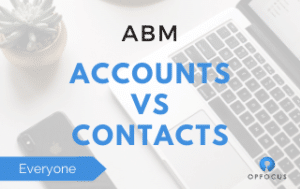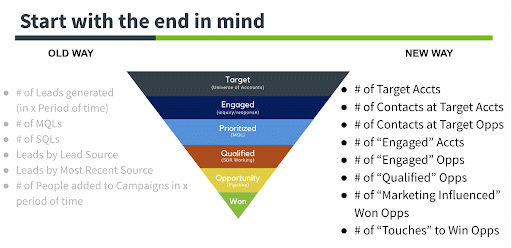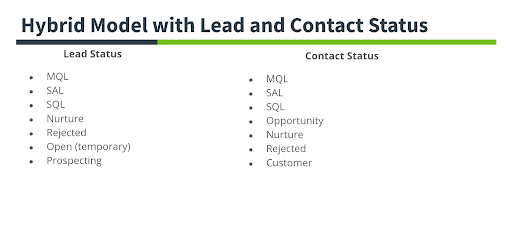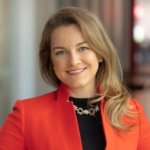Moving away from Leads to a Contact & Account model
 For years, marketing teams have targeted individuals at a company for outreach. This leads to a long, back-loaded sales cycle that requires significant effort to identify and loop in additional stakeholders later on. So why does the marketing department target a single person when so many people are involved in the buying process? These pains have driven a shift in how sales teams operate, with more revenue operations teams pushing to adopt an account-centric model. However, this account-centric model creates a dilemma for how to structure Salesforce, because the system is designed to focus on Leads and individuals. What are our options, then?
For years, marketing teams have targeted individuals at a company for outreach. This leads to a long, back-loaded sales cycle that requires significant effort to identify and loop in additional stakeholders later on. So why does the marketing department target a single person when so many people are involved in the buying process? These pains have driven a shift in how sales teams operate, with more revenue operations teams pushing to adopt an account-centric model. However, this account-centric model creates a dilemma for how to structure Salesforce, because the system is designed to focus on Leads and individuals. What are our options, then?
The Traditional Model
The traditional Lead centric view of marketing targets Leads. It aims to convert a single person that sales are then able to work as an opportunity. Unfortunately, this just isn’t how some organizations work, there are many people involved in the buying process that a Lead centric model is not capturing.

Some marketing teams are focused on the number of Leads or MQLs sourced, but most teams don’t care about this anymore. What they do care about is the number of target Accounts in the pipeline. They also care more about how many Contacts they have in these target Accounts and how many Contacts are involved in deals. There is a clear disconnect in how these two teams thing. Sales cares about working Accounts and marketing cares about Leads.
The Solution – An Account Centric Model
Companies that have strategic/target Accounts, and recognize that there are 3-5 stakeholders who are typically involved in a purchasing decision can usually find out who those people are. Marketing teams can then engage those Contacts and pass them over to sales once they reach a certain threshold. Many adopters of this approach have seen a higher and faster conversion to closed won business.
In replacing Leads, some changes to the system architecture will likely be required. These include adding statuses to the Contact record, which may be the same or similar to the Lead statuses that will now be replaced by the Contact. Another is the creation of marketing stages added to the Opportunity, that are at the top of the funnel, ahead of the sales stages. Marketing owns the Opportunity, moving it through the stages when specific criteria are met, and then like a MQL, the Opportunity is handed over to sales.

A Hybrid Model
Some may ask, “I have BDR’s and accounts; can I still use Leads and use Accounts?” – Yes, this is a hybrid model, and this will require some explanation. Finding the correct model will depend on your business process and how you go to market. One option for this hybrid model, use Contacts for strategic Accounts and Leads for non-strategic companies. Your BDR team can then review Leads coming in from organic areas, qualify or reject them, then convert them to a Contact, account, and/or opportunity when they meet your business’s qualification criteria. If they are a strategic account, you can set up Salesforce to automatically convert those Leads to Contacts work at the account level. Quick tip, several third-party tools can assist with this conversion, such as Leandata and Engagio (which has been acquired by Demandbase.)
A common question we get asked is, “How do we keep track of Contacts as they progress through the marketing and sales funnel?” Salesforce out of the box has a standard field called Lead status. One quick tip is to create a custom field called Contact Status on the Contact object and map your Lead status to the Contact status. A key element here is to have matching values and additional values on the Contact that track its status as it advances through the sales process.
Please take a look at some of the Contacts’ statuses we have listed below. We also recognize that this model may not work for everyone depending on how your customers make buying decisions.

Final Thoughts
You now have a better understanding of what account-centric marketing is and why many teams are adopting it. An account-centric model may be the right fit, or you may want to use a hybrid model depending on your situation. If you aren’t sure about what’s suitable for your team, connect with our marketing experts. We work with our clients to understand how they do business to prescribe the most appropriate solution for their team.



